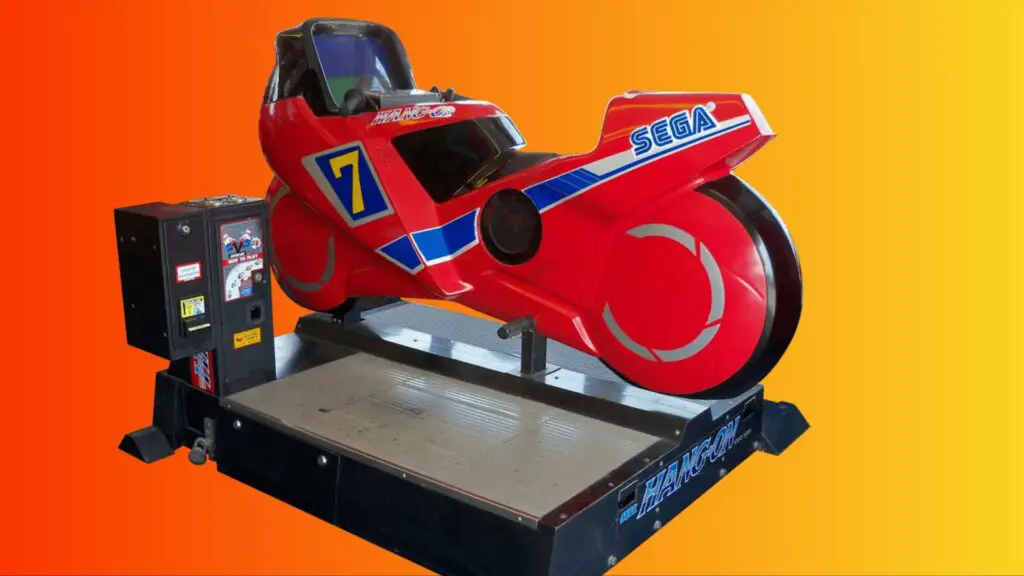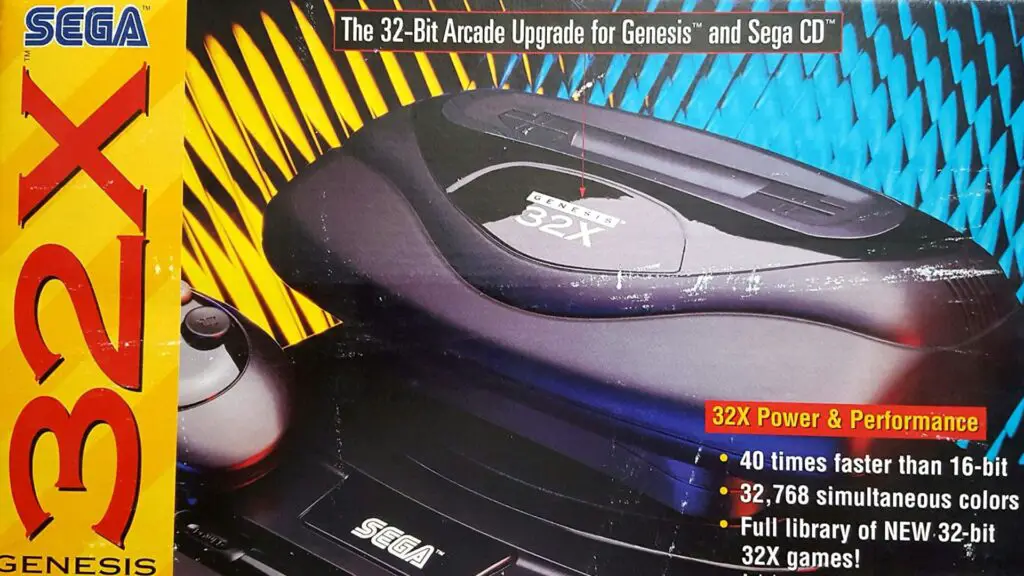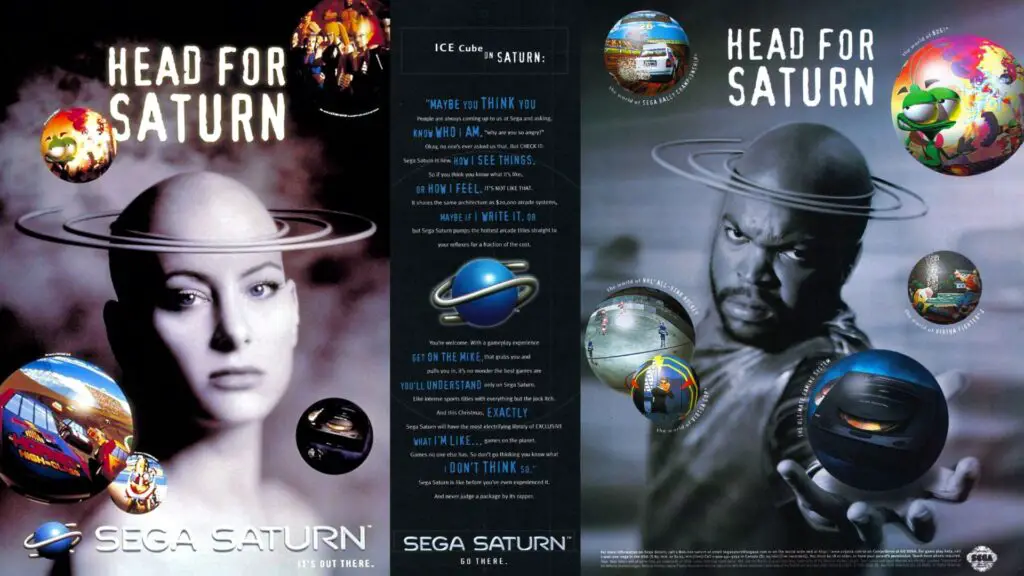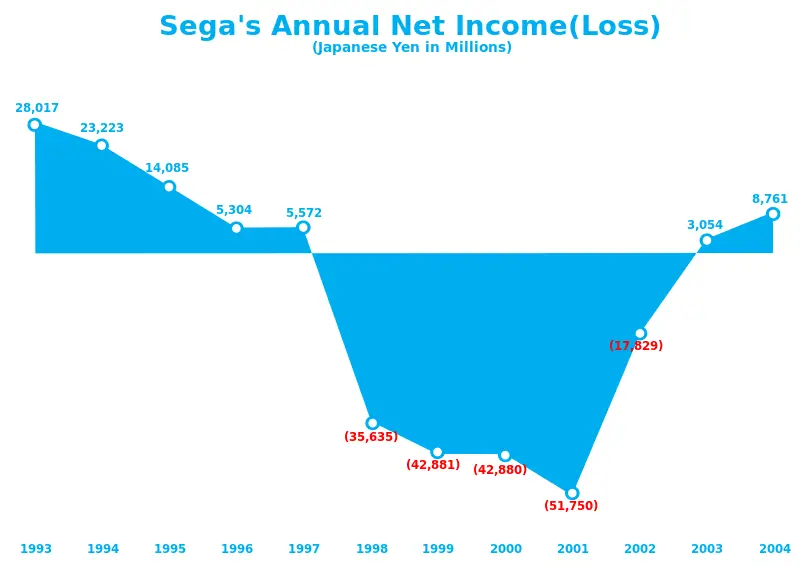Throughout the early 90s Sega had seen unprecedented levels of success due in large part to the efforts of Tom Kalinske and the men and women at Sega of America. However, this success also led to internal discord as the executives and employees at Sega of Japan grew increasingly envious of their American cousins. This strife, combined with an excess of pride and the desire to re-exert control on the part of the Japanese, led to many missed opportunities and blunders. Yet in spite of all of this Sega might have still averted catastrophe if it could successfully release its next-generation hardware. However, the rot that had infested Sega’s corporate culture had by this point fully taken hold, the inevitable end result of which would be the decline and fall of Sega’s console empire.
Sega and Hardware

One thing that should be understood about Sega of Japan is that, compared to other console creators at the time, is primarily focused on hardware over software. This was a result of the company’s arcade roots. Even when it did eventually begin creating consoles they were created with the intention of bringing the arcade experience home. This would prove problematic in the long run as the philosophy for creating consoles and that for creating arcade boards is very different. The arcade hardware industry is highly competitive with companies constantly developing a wide variety of machines intended to draw players’ eyes to the game of the week. This attitude of constantly trying to dazzle the masses with a constant stream of newer and flashier hardware would cause further friction between the hardware-oriented Sega of Japan and the software and marketing-focused Sega of America, ultimately leading to some of the company’s greatest failures.
32 Bits of Failure

Nothing is more emblematic of this dynamic than the disastrous release of the 32X. In 1994 Sega of Japan finished development on and released the Sega Saturn. However, one issue among Sega’s engineers that had not been fully hammered out until fairly late into the system’s development was whether the new console should use CD-ROMs or cartridges. While CDs had triumphed in the end there still existed a sizable faction within Sega of Japan that wanted to push cartridges and given that basing a game system entirely on the still somewhat unproven technology of CDs was seen as a possible risk. Therefore to mitigate that risk it was decided to create a 32-bit cartridge system that could piggyback off of the success of the established Genesis. Furthermore, this was also intended to tide players over during the one-year gap between the Saturn’s Japanese and North American launches. On paper this seemed like a good idea; provide a low-cost entry-level alternative to getting a next-gen system for those who either could not afford a Saturn at launch or else simply wanted to stick with their Genesis while also keeping Sega in the news until the Saturn could launch. However, when this device was presented to Tom Kalinske and the team over at Sega of America, they realized that the 32X would more than likely be a disaster. It was the opinion of the Kalinske and the men and women over at Sega of America that the base Genesis still had plenty of life left in it and that resources would be better spent on games for it rather than a costly new device that could only ever appeal to a subset of the market and which would only serve to further splinter the player base. These objections were promptly ignored and the executives at Sega of Japan insisted that the product be released in the US. Needless to say, Kalinske and co had been completely correct as between having to provide support for the Sega Genesis, the Game Gear, the Sega CD, and the 32X along with preparing for the launch of the Saturn spread Sega of America’s resources too thinly, without a strong library of titles and with knowledge of the impending release of Sega’s true next generation machine the device floundered. Even worse was the fact that Nintendo was able to take advantage of Sega’s momentary lapse to pull ahead of the Genesis in North America and ultimately win the 16-bit console war.
On a Journey to Saturn

In spite of this failure, Sega of America was still determined to make the Saturn a success, to this end it had planned a massive media blitz ahead of the system’s North American launch which was to take place on Saturday, September 2, 1995, or Saturn day as it was dubbed. However, in Japan CEO Hayoa Nakayama and his fellow executives had grown increasingly anxious about the Saturn’s prospects in North America. In Japan, the system had been fairly successful, easily the best-selling Sega console in that market, but was already starting to lag behind the Sony PlayStation. Much of the Saturn’s early success could be chalked up to two factors; the first was the inclusion of a port of the original Virtua Fighter which was extremely popular in Japan as a pack-in title, the second was the fact that the Saturn had launched a week earlier than it’s competition allowing it to build up a bit of extra momentum. However, these factors were not guaranteed to work as well in the North American market, especially since Virtua Fighter wasn’t as popular in the West as it had been in Japan. It was with this in mind that Hayoa Nakayama and the executives at Sega of Japan decided at the 11th hour to make a sudden change to the Saturn’s North American launch, the console was to release on July 8, 1995. To say that this decision struck terror into the hearts of Tom Kalinske and the employees at Sega of America would be a tremendous understatement, not only had Sega of Japan effectively ruined all of their carefully laid plans for building hype for the new system’s release, the fact that this decision was made so late effectively meant that it would be impossible to readjust. Thus the Saturn would have to release with no build-up, no pre-release hype, very little advertising, and in highly limited quantities. The last issue would also mean that they would not be able to supply many retailers, effectively destroying the good relationships with said retailers that the men and women at Sega of America had spent years cultivating. For that matter, because Nakayama insisted on strict secrecy third-party developers were not informed of the change in plans before the announcement was made which not only harmed Sega’s relationship with said developers, it also ensured that there would be a 2-month gap between the initial batch of launch titles and when games would began releasing regularly for the system. Tom Kalinske begged Hayoa Nakayama not to go through with this plan, but Nakayama stubbornly insisted on the early release arguing that it would give the Saturn an early lead over the PlayStation. With no other choice Kalinske obeyed the CEO’s wishes. In a day that will live in gaming infamy, Tom Kalinske both announced and released the Sega Saturn at a press conference at the very first E3, that same day Sony drove the final nail into Sega’s coffin when it announced that the PlayStation would be releasing for $100 less than the Saturn. All that Tom Kalinske and the team at Sega of America feared came to pass; third parties and retailers were angered with Sega, with many refusing to work with the company in the future, the lack of advertising meant that many did not even know that the system had been released, and any momentum that the Saturn might have hoped to gain was lost almost immediately.
The Downfall

If one were to witness the offices of Sega of America in 1996 they would see a workplace beset with an air of impending doom. Most of the long-term employees who had been responsible for the company’s greatest successes had long since jumped ship to greener pastures. Those that remained such as President Tom Kalinske did so having witnessed all that they had worked so hard for brought utterly to ruin. Sega of America at that time suffered from major staff turnover problems as a toxic work environment led to overworked and overstressed employees. Indeed documents from this time reveal a company in a desperate mad scramble to find some way to salvage the Saturn and Sega’s image in the eyes of the public. Yet in these efforts, it had been rendered utterly impotent, Sega of Japan had systematically eroded Sega of America’s autonomy and Tom Kalinske’s authority rendering him as little more than a figurehead. Because the Saturn was moderately successful in Japan (even managing to outsell the Nintendo 64 in that market) the Japanese insisted on dictating their will to their American counterparts, reasoning that what worked in Japan would surely work in North America, and when it did not heaped ever more blame on the men and women at Sega of America. Eventually, Tom Kalinske could take no more and resigned from the company, it would be another 2 years before another President of Sega of America was selected during which time the company floundered rudderless. In the end, although the Saturn would end up being Sega’s best-selling console in Japan, its failure in international markets, in particular North America would make the system a failure overall, one which Sega would never fully recover from. Though the Sega Dreamcast was more successful, by this time Sony had become an unstoppable juggernaut and Sega was hemorrhaging money, it was quite simply too little too late. Thus ended Sega’s console empire.
Conclusion
From these events, we can see that the demise of Sega’s console empire came about due to both external market pressures as well as internal discord. While it is doubtful that the Sega Saturn would have ever been able to outsell Sony’s Playstation, there were many prior decisions that could have circumvented this situation, providing the stability to allow Sega to endure in the long term in the console industry. The failure of Sega’s ambitions in the console industry was far from guaranteed, but because of pride, stubbornness, spite, and stupidity that is ultimately what came to pass. As the old saying goes “against foolishness the gods themselves contend in vain.” Although Sega still exists today and still makes good games, it is not the same as it once was, and it is likely that it will never be again.
Works Cited
Harris, Blake J. Console Wars: Sega, Nintendo, and the Battle That Defined a Generation. Dey Street, William Morrow, 2015
Caruso, Norman AKA The Gaming Historian. Sega’s 3 Biggest Mistakes, uploaded to YouTube, December 1, 2017. https://www.youtube.com/watch?v=RL9l2Z7sh2g






